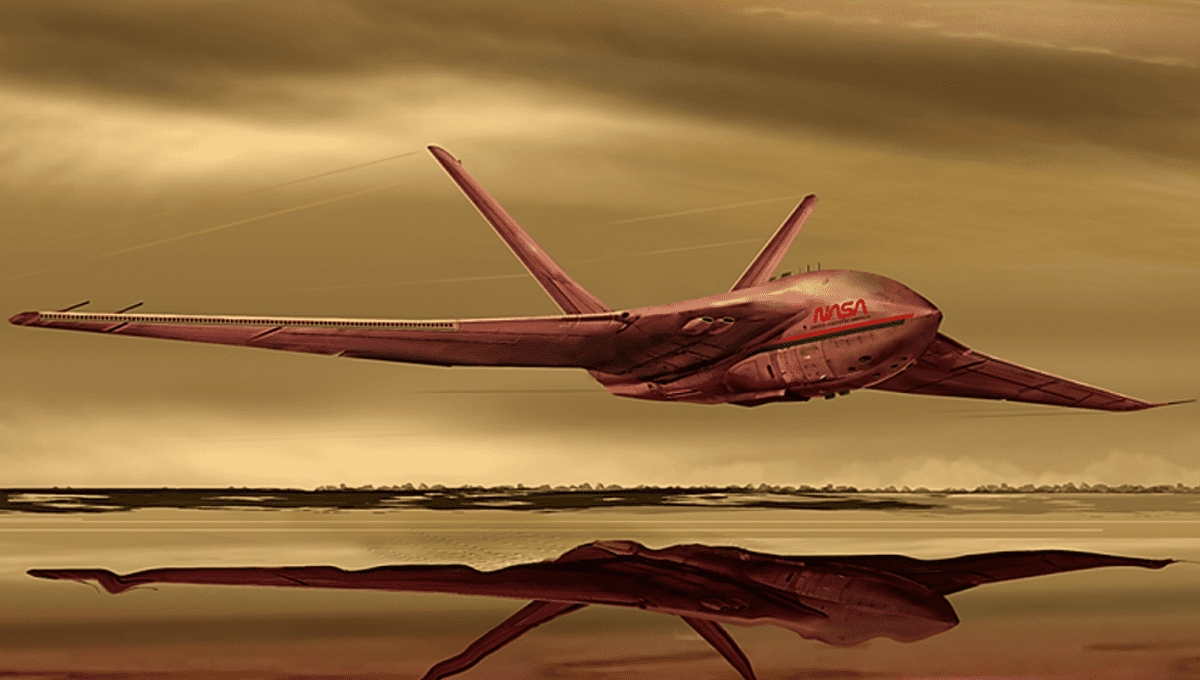NASA’s Innovative Funding Proposals for a Space Seaplane

ground-breaking design for a space seaplane that may study the chemistry of Titan, Saturn’s largest moon, is being supported by NASA. The TitanAir project, created by Quinn Morley of Planet Enterprises, proposes to fly through Titan’s dense atmosphere of nitrogen and methane and go through its oceans.
Flying on Titan would be “quite straightforward because to its low gravity and thick atmosphere,” according to NASA. A flying, highly instrumented boat that might soar through Titan’s atmosphere and travel through its lakes is what Morley imagines. Like a cruise liner on Earth, the beach will shift smoothly. Noting that not every Innovative Advanced Concepts (NIAC) study conducted by NASA is regarded as an official agency mission. The most recent round of awards for the NIAC program, which is part of NASA’s Space Technology Mission Directorate, totaled $175,000 in grants to 14 projects. The program sponsors early-stage research to examine technologies that may enable future missions. One of the 14 projects chosen for financing in this round is the TitanAir project.
The Titan Flyer design uses a porous area of the leading edge skin to “drink in” methane condensates and organic material. The TitanAir project’s essential component is its liquid ingestion technology, which makes it possible to gather important scientific data that would be challenging to obtain through conventional methods.
“This ingested substance will be gathered by capillary features inside the wing and combined into a continuous fluid stream, which may then be directed to the scientific equipment inside the flyer. To permit sporadic low-altitude flight For instance, the Flyer will touch down in the sea. Titan is similar to a flying boat, however lakes on Titan are made of methane instead of water, as described by Morley in a blog post. It is known as the “Flying Laker.”
According to a press release from the Washington-based business Gig Harbor, the fluid will be collected into a continuous fluid stream once it is inside the wing utilizing a number of competing techniques. A flexible membrane, a biomimetic approach to Earth’s water-storing cacti, and channels carved into the skin make up the other three techniques.
The information is analyzed with scientific tools and then sent back to Earth in between missions. The TitanAir project seeks to collect as much information as it can about Titan’s atmosphere and oceans, including information about their chemistry and potential for supporting life.
According to Michael LaPointe, NIAC program executive at NASA Headquarters, “These early Phase I NIAC investigations help NASA decide whether these futuristic concepts may pave the way for future space exploration capabilities and offer extraordinary outcomes.” These initiatives “may pave the way for fresh expeditions and advance our knowledge of the solar system.” According to Bill Nelson, the administrator of NASA, “NASA dares to make the unthinkable possible. It is only possible because of the creative thinkers, doers, and innovators who are influencing the direction of space exploration. The NIAC program assists in providing these innovative scientists and engineers with the resources and assistance they need to enhance the technology that will support next NASA missions.
Source: foxnews.com











